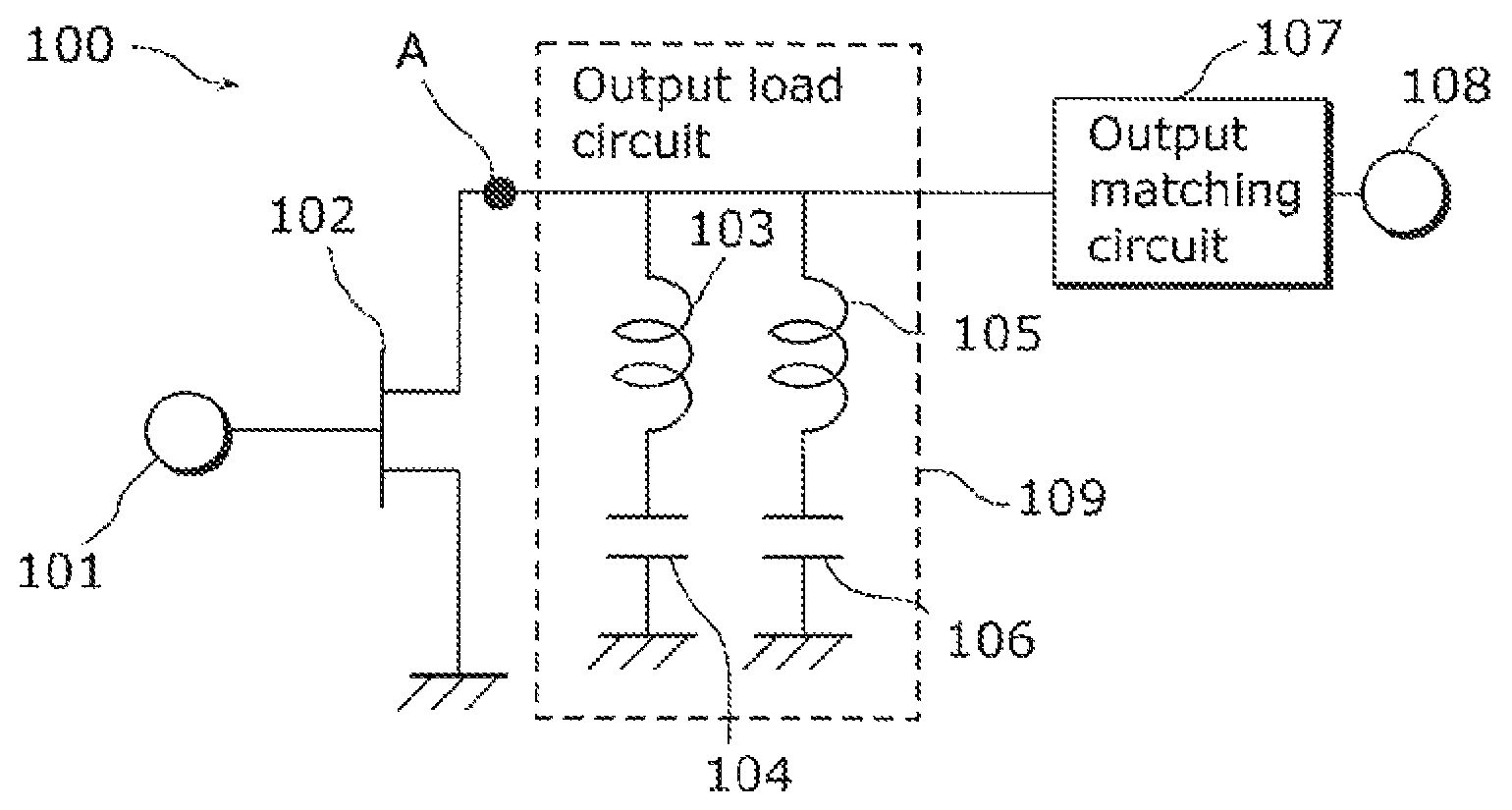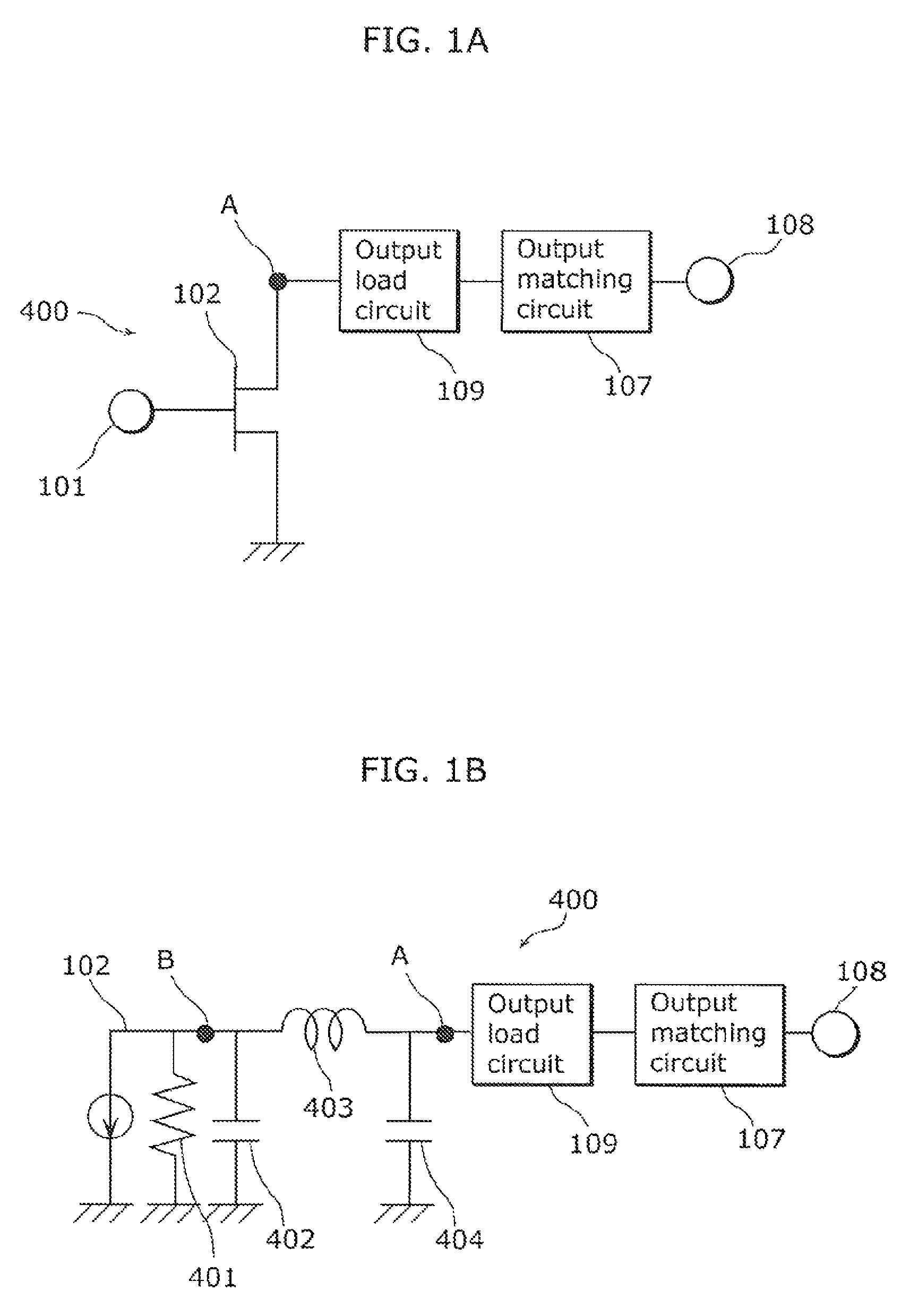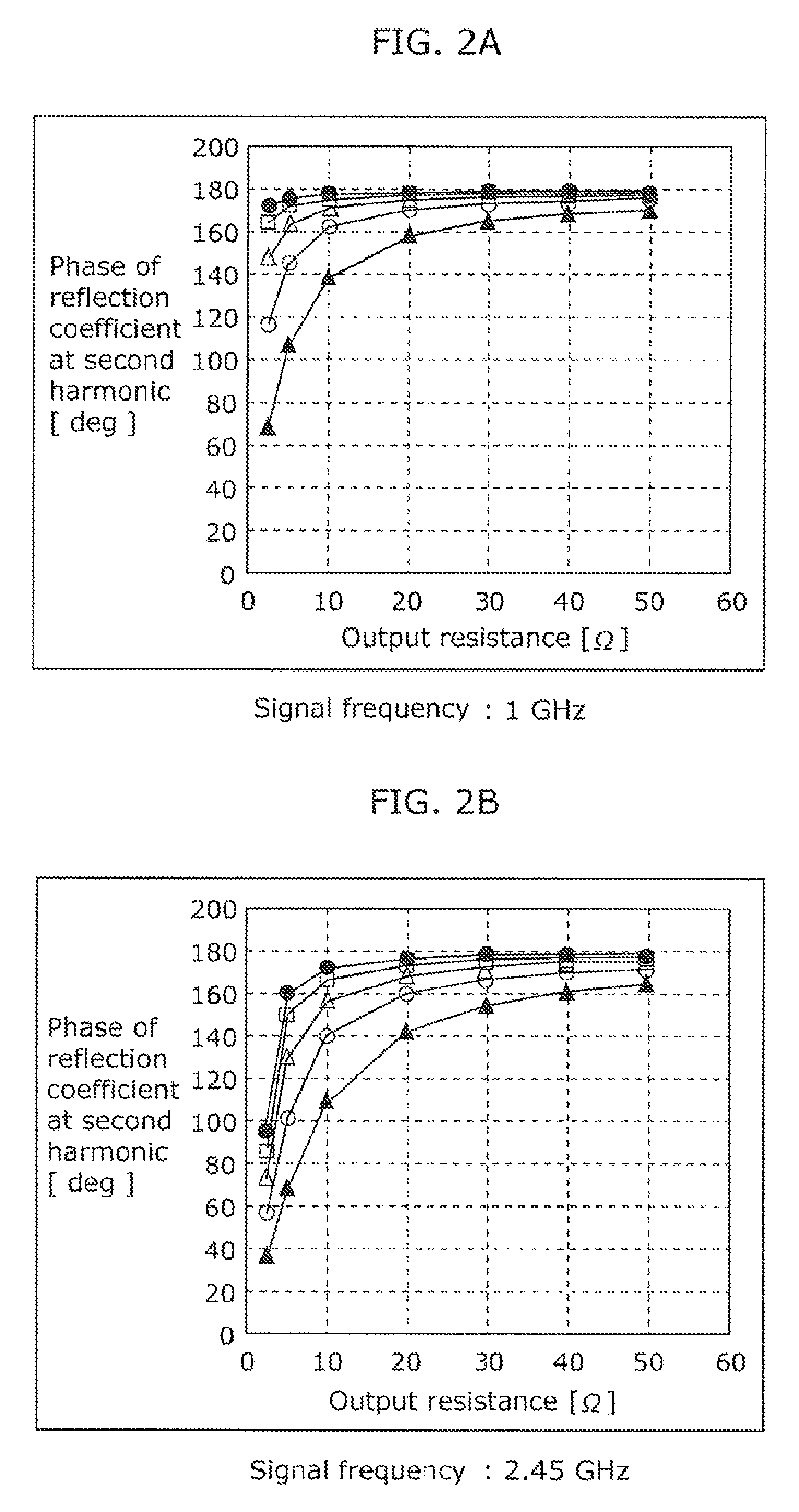Radio frequency power amplifier
a power amplifier and radio frequency technology, applied in the direction of amplifiers with semiconductor devices only, amplifiers with coupling networks, amplifiers with semiconductor devices, etc., can solve the problems of fet components affecting high-efficiency operation, and achieve the effect of high pa
- Summary
- Abstract
- Description
- Claims
- Application Information
AI Technical Summary
Benefits of technology
Problems solved by technology
Method used
Image
Examples
embodiment 1
(Embodiment 1)
[0048]Hereinafter, referring to the drawings, a description is given of a radio frequency power amplifier according to Embodiment 1.
[0049]FIG. 1A is a schematic circuit diagram of a radio frequency power amplifier 400 according to Embodiment 1. FIG. 1B is an equivalent circuit diagram of the radio frequency power amplifier 400 according to Embodiment 1.
[0050]In FIG. 1A, the radio frequency power amplifier 400 includes: an amplifying element 102 (for example, FET) which amplifies a radio frequency signal that is an input signal; an output load circuit 109; and an output matching circuit 107. The radio frequency signal input from an input terminal 101 is amplified by the amplifying element 102, and is output from an output terminal 108 through the output load circuit 109 and the output matching circuit 107.
[0051]FIG. 1B is an equivalent circuit diagram where the output impedance of the amplifying element 102 in FIG. 1A is represented by an output resistance 401, a first ...
embodiment 2
(Embodiment 2)
[0072]Next, referring to the drawings, more specific descriptions are given of the circuit configuration of the radio frequency power amplifier in Embodiment 2.
[0073]FIG. 3 is a circuit diagram of a radio frequency power amplifier 100 according to Embodiment 2.
[0074]The radio frequency power amplifier 100 in FIG. 3 includes an amplifying element 102 (for example, FET) which amplifies a radio frequency signal, an output load circuit 109, and an output matching circuit 107. The radio frequency signal input from an input terminal 101 is amplified by the amplifying element 102, and is output from an output terminal 108 through the output load circuit 109 and the output matching circuit 107.
[0075]The output load circuit 109 includes: a first series resonant circuit where an inductor 103 serving as an inductive element and a capacitor 104 serving as a capacitive element are connected in series; and a second series resonant circuit where an inductor 105 serving as an inductiv...
embodiment 3
(Embodiment 3)
[0094]Next, referring to the drawings, a description is given of another specific circuit configuration of the radio frequency power amplifier according to the present invention in Embodiment 3.
[0095]FIG. 6 is a circuit diagram of a radio frequency power amplifier 300 according to Embodiment 3.
[0096]Comparing the radio frequency power amplifier 300 in FIG. 6 with the radio frequency power amplifier 100 in FIG. 3, the output load circuit 306 has a circuit configuration different from the output load circuit 109. The other circuit configurations are the same, and thus, the same referential numerals are used and their detailed descriptions are not given.
[0097]The output load circuit 306 in FIG. 6 includes: a third series resonant circuit which includes an inductor 302 serving as an inductive element and a capacitor 303 serving as a capacitive element that are connected in series; a fourth series resonant circuit which includes an inductor 304 serving as an inductive eleme...
PUM
 Login to View More
Login to View More Abstract
Description
Claims
Application Information
 Login to View More
Login to View More - R&D
- Intellectual Property
- Life Sciences
- Materials
- Tech Scout
- Unparalleled Data Quality
- Higher Quality Content
- 60% Fewer Hallucinations
Browse by: Latest US Patents, China's latest patents, Technical Efficacy Thesaurus, Application Domain, Technology Topic, Popular Technical Reports.
© 2025 PatSnap. All rights reserved.Legal|Privacy policy|Modern Slavery Act Transparency Statement|Sitemap|About US| Contact US: help@patsnap.com



